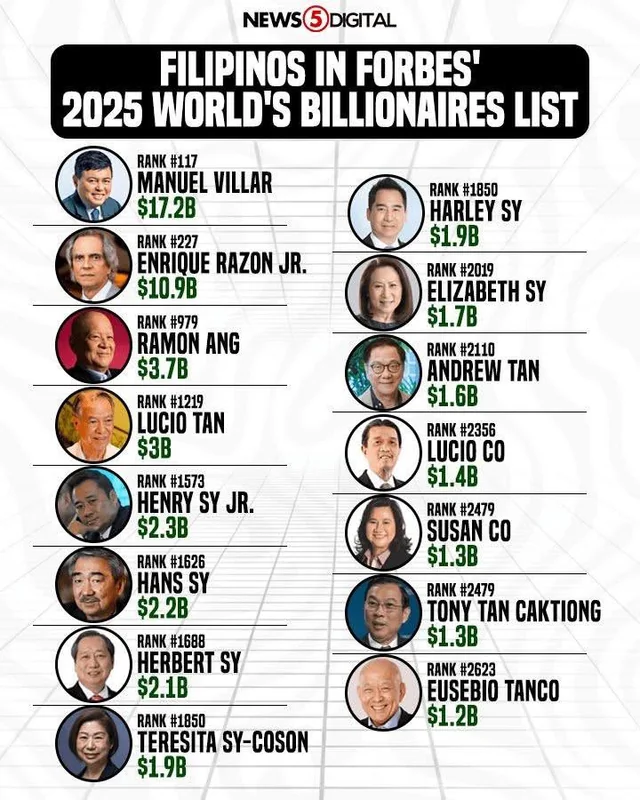📷Unionbank of the Philippines chief economist Ruben Carlo Asuncion
The headline inflation rate in the Philippines likely slowed down in September due to slower increases in food and transportation costs caused by adjustments in gasoline prices.
A City Post poll of economists reached a median average rate of 2.5 percent, lower than the 3.3 percent in August and the 6.1 percent in the same month last year.
If realized, this would be the lowest monthly print since the 2.3 percent clip in October 2020, or about four years ago.
The Philippine Statistics Authority is set to announce the September inflation figures on Friday, October 4.
Metrobank Research expects headline inflation to reach 2.3 percent in September as rice and oil prices continue to decline.
“The forecasted inflation rate, if realized, would provide a more favorable economic environment, suggesting that government efforts to manage rice prices and global oil price trends are having a positive impact,” it said on its commentary posted on its website.
“This also provides more space for the central bank to deliver two more 25-basis-point cuts each at the remaining Monetary Board meetings this year to help economic growth as inflation slows,” it added.
Maybank Investment Banking Group economist Zamros Bin Dzulkafli, Pantheon Macroeconomics economist Miguel Chanco, and BPI lead economist Jun Neri expect inflation to hit 2.4 percent in September.
Neri said that the price of rice has been going down all month. A drop in the prices of meat, veggies, and oil, along with the peso’s rise against the US dollar, could also put downward pressure on the market.
But faster rate hikes in power, higher prices for cooking gas, and higher prices for fish and fruits could balance out the negative pressures.
Chanco, on the other hand, believes that inflation will slow down in September due to the still-high and positive results of last year’s rice price spike.
“The rate of transport price deflation should deepen, in view of the ongoing decline in fuel prices,” Chanco said.
“The risks, I’d say, are probably tilted to the downside, given that we’ve yet to see the cut in rice tariffs filter fully through to the CPI (consumer price index) numbers,” Chanco added.
Dzulkafli said that the BSP might lower rates by a total of 75 basis points this year if inflation slowed down in September. He said this was possible because of the recent “aggressive” 50-basis point rate cut by the US Federal Reserve.
HSBC Global Research chief economist Aris Dacanay, Security Bank Corporation chief economist Robert Dan Roces, and Moody’s Analytics Sarah Tan, expect inflation to drop to 2.5 percent this month.
Dacanay said that fuel costs had dropped by as much as 7 percent from one month to the next. This was because of a stronger peso and lower oil prices around the world.
He also said that if inflation stays at 2.5 percent year-on-year, it is likely that the central bank will lower interest rates in October.
Roces said that lower food prices would cause lower inflation, but he also said that potential risks from oil and typhoons may keep the BSP cautious about interest rate cuts.
“The central bank is likely to opt for a gradual approach, with 25-basis point reductions in October and December,” he said.
Tan, on the other hand, said that rice prices will go down, which is a big part of the highly weighted food basket. She said that when India stopped exporting non-basmati white rice in 2023, the price of the basic food went through the roof.
In August, rice prices declined from 20.9 percent in July to 14.7 percent. Almost half of all inflation is usually caused by rice.
The Agriculture Department said earlier this month that they want to get the price of rice to less than 10 percent.
“The cut in the tariff on imported rice, which took effect at the end of June and will last until year’s end, will help bring down inflation for this staple,” Tan said.
Michael Ricafort, chief economist at Rizal Commercial Banking Corp., said that rates would be 2.6 percent in September because of base effects.
He also said that the drop would continue because of lower taxes on imported rice and lower prices around the world.
Unionbank of the Philippines chief economist Ruben Carlo Asuncion and Philippine National Bank economist Alvin Arogo both said that consumer price growth could slow to 2.8 percent in September.
Asuncion attributed the disinflation to the broad food and transport CPI, as he expects a decline from rice prices and lower gasoline/diesel prices from declining global prices.
Arogo said that the stable consumer price index for food and nonalcoholic drinks in August protected against the possible negative effects of current and future typhoons on food prices in general.
“Moreover, the combination of Executive Order 62 (lower rice tariff), downtrend in key imported commodities (e.g., Vietnam rice and Dubai crude), and favorable base effects should result in average inflation of 3.0 percent from September to December,” Arogo said. (TCSP)




